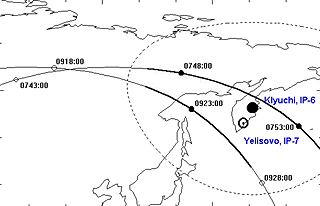
Below I have made some extracts from the book "ROADS TO SPACE, An oral history of the Soviet Space Program", edited by John Rhea, translated by Peter Berlin and published by the Aviation Week group in 1995. The extracts are of course things that I find interesting, but the book is fantastic and full of gems, I recommend it. I have commented the extracts. My comments are shown in red. Comments from everyone are highly desirable.
"While we were launching sounding rockets carrying animals we were also making preparartions for launching the first artificial Earth satellite with an animal onboard.".....
...."My role in the preparations for the launch of the dog Laika was minor, as I was still engaged in sending up sounding rockets, and the two activities ran almost in parallel."....
...."As we all know, Laika died in orbit. The air temperature began to increase shortly after lift-off and caused the dog to perish. A large number of verfication experiments convinced us that the cause of death was indeed overheating and none other, including weightlessness."....
The first two extracts seem to indicate that the launch of Laika was planned well in advance, while the third one indicates a design made in great haste. The thermal control of the dog cabin could not have been such a big problem given enough time to work on it. Ostashov on p. 294 describes how everyone was called back from vacation after the Sputnik 1 triumph around October 11 and that the Sputnik 2 R-7 booster was sent to Tyuratam on October 18. My guess is that some preliminary work had been done, but that the work had to be speeded up feverishly after Khrushchov's demand to put something up before Nov 7. But still, the Sputnik 2 tale is bordering on the incredible. In the Ostashov's text there is a description of the hurried design of a timer that would permit saving battery power by switching the "Tral" transmitter on for 15 minutes every orbit. Previously, I had known that the transmitter did not operate continously, but I thought that there was a command link. Ostashov and Mozzhorin now confirm there was no such command system on Sputnik 2. Overheating...I did not know that!
Binokl Range and range
rate system, a radar working on "SHF". The onboard transponder is called
Fakel-S.
My
guess is that this is an S-band (2500-3000 MHz) transponder-supported radar
system.
Irtysh An interferometer
system working in the decimetre wave-band.
When
the Russians talk about "decimeter wave-band" it usually means around or
just below 1 GHz.
Tral A high-speed
telemetry system.
I
know from various publications that Sputnik 3 carried a TM system what
worked on 66 MHz. I guess that this is "Tral".
RVD Command system for early satellites.
MRV-2M Command system developed for Vostok.
Zarya Voice radio
link for Vostok.
Used
143.625 MHz for VHF downlink and 20.006 MHz in the HF-band.
Signal A radio beacon
It
is known that the "Signal" on 19.995 MHz the carrier of which was on-off
keyed. The keying rate was equal to the cosmonaut pulse rate, and the "off"
duration was proportional to the cosmoaut's chest width (thus indicating
respiration).
Seliger-Tral-D The
onboard TV system for transmitting TV pictures of the cosmonaut.
Frequency
83 MHz.
Peleng A shortwave beacon for direction finding in the Vostok re-entry vehicle and the cosmonaut's space suit.
| Spacecraft |
|
|
|
|
|
|
|
|---|---|---|---|---|---|---|---|
| Sputnik 1 |
|
- | - | - | - | - | - |
| Sputnik 2 |
|
- | "Tral-D" biomed | On "Tral"
frequency |
- | - | - |
| Sputnik 3 |
|
|
"Tral-D" | - | - | - | - |
| Vostok |
|
|
- | "Seliger-Tral-D" | "Zarya" | "Signal" | "Peleng" |
(Mozzhorin p. 411)
Zond program "For certain reasons I am unwilling to elaborate on the difficulties we encountered in the system integration effort of the lunar mission." Mishin p. 93. What is still so sensitive about that program????
Vostok test flight Dec. 22,1960 The December 22, 1960 launch failure with a dog-carrying Vostok caused the re-entry vehicle to land in the Podkamennaya Tunguska district near the city of Tura in the Yevenki National Park. (Mozzhorin. p.415, Pallo p. 197)
Recalls the accident with Cosmos 57 (Voskhod 2 test flight) when the two Kamchatka stations Yelisovo (main station and called IP-7 in N.Kamanin's diary) and Klyuchi (back-up station called IP-6 in Kamanin's diary) transmitted the same command (No. 42: "tranfer air to air-lock") at the same time which was interpreted by the spacecraft as the No. 5 command ("Descend"). Subsequently the retro-rocket fired, but in the wrong direction, so the spacecraft stayed in orbit, but the self-destruct charge in the craft destroyed it. (IP=Izmernitelnii Punkt - Ground Measurement [tracking] Points).
The pass over Kamchatka occured at 0750 UT, while the launch had taken place at 0730 UT on February 22, 1965.
According
to Kamanin's diary, at 0905 UT the deployment of the inflatable airlock
had been observed on the direct TV link from the spacecraft at the tracking
station in the Crimea (Yevpatoria)
and also briefly at Baikonur, despite the low elevation angle.
![]()
![]() [Sven's
Space Place]
[Sven's
Space Place]
![]() [Space
History Notes]
[Space
History Notes]
![]()
Copyright © 1996
Sven Grahn